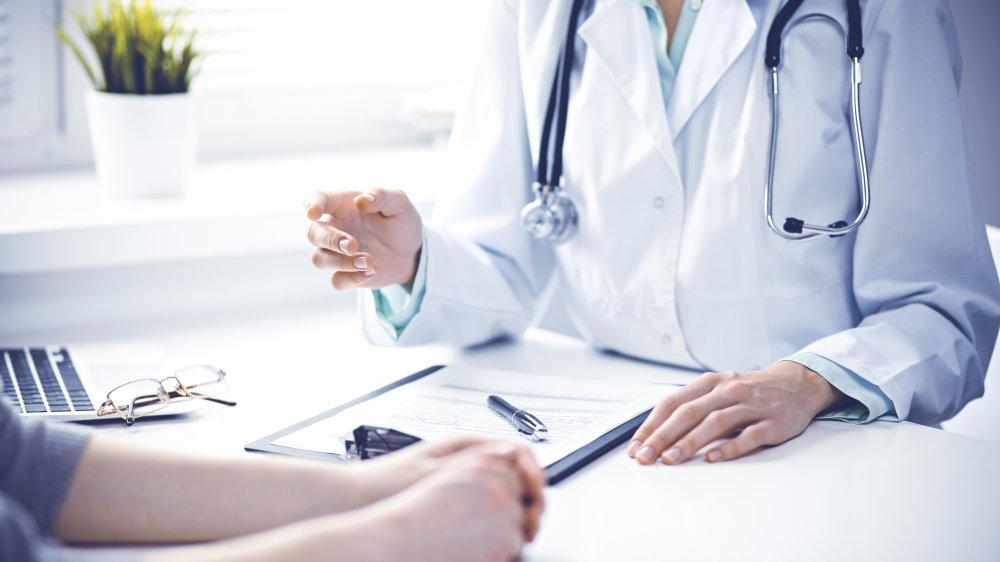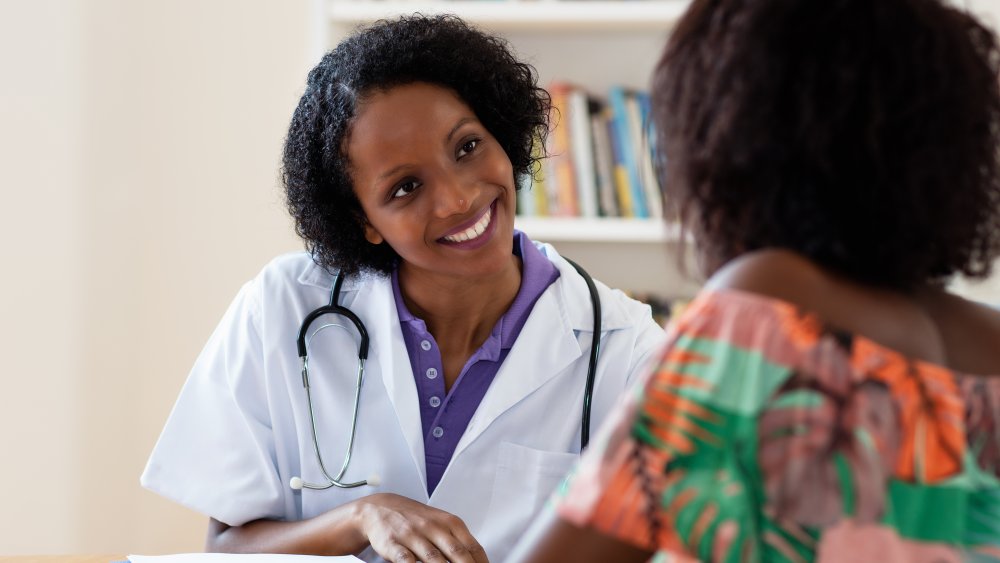What A Doctor Wants You To Know Before You Get A Breast Exam
Every year, once you turn 40, there's one more thing you need to add to your yearly to-do list: get a mammogram. The American Cancer Society says starting at age 45, a yearly mammogram is a must, although if you've got a family history of breast cancer, you might want to start even earlier. Sure, getting your boobs squished isn't particularly fun, but then, neither is having your teeth cleaned, and you have to do that twice per year. Plus, when it comes to "protecting the girls," the earlier you can detect any problems, the better the chance for a complete recovery.
However, you're probably going to get a regular breast exam at the doctor well before you get that first mammogram. So what should you know before you schedule that first breast exam? Dr. Elliot Hirsch, the Chief of Plastic Surgery at Providence Cedars-Sinai Tarzana Medical Center, specializes in procedures involving breasts, including reconstruction after a mastectomy. He started off by saying that, while breast self-exams can't really detect all of the subtle changes that may indicate cancer, "there is value in women being familiar with their own breasts, so they understand what's normal and promptly report changes." So keep on giving yourself those shower pat-downs — the National Breast Cancer Foundation recommends doing so once a month.
What to expect at your annual exam
Once you arrive for your doctor's appointment, well, you'll probably have to sit in the waiting room for a while, you know how it goes. (Just imagine how hard it was back in the pre-smartphone days, when you'd actually have to read those 5-year-old back issues of People!) Once your number comes up, you'll first need to stop off in a changing cubicle, since Dr. Hirsch says that you'll need to wear a hospital gown while the exam takes place. (You probably want to leave any expensive jewelry or anything else you're not comfortable leaving unattended at home.)
During the exam, Dr. Hirsch explains that you'll be lying on your back with your arms behind your head as the doctor uses the pads of their fingers to examine your breasts for any lumps or other abnormalities. They will also examine your underarm area — while you might think this calls for using extra deodorant, Dr. Hirsch says please don't. He recommends that "patients should come to an exam without extra lotions or perfumes on their body to make the exam easier."
On your way out, you may want to stop off at the desk to check that your info is up-to-date. That way you'll be sure to get that reminder to come in again next year.


